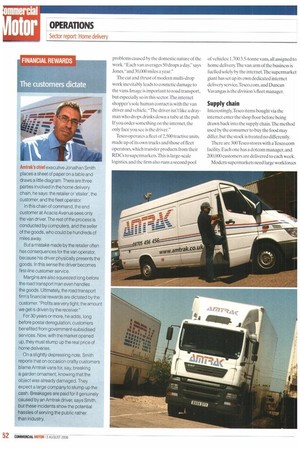The customers dictate Amtrak's chief executive Jonathan Smith places a
Page 52

If you've noticed an error in this article please click here to report it so we can fix it.
sheet of paper on a table and draws a little diagram. There are three parties involved in the home delivery chain, he says: the retailer or 'etailer', the customer, and the fleet operator.
In this chain of command, the end customer at Acacia Avenue sees only the van driver. The rest of the process is conducted by computers, and the seller of the goods, who could be hundreds of miles away.
But a mistake made by the retailer often has consequences for the van operator, because his driver physically presents the goods. In this sense the driver becomes first-line customer service.
Margins are also squeezed long before the road transport man even handles the goods. Ultimately, the road transport firm's financial rewards are dictated by the customer. Profits are very tight; the amount we get is driven by the receiver."
For 30 years or more, he adds, long before postal deregulation, customers benefited from government-subsidised services. Now, with the market opened up, they must stump up the real price of home deliveries.
On a slightly depressing note. Smith reports that on occasion crafty customers blame Amtrak vans for, say, breaking a garden ornament, knowing that the object was already damaged. They expect a large company to stump up the cash. Breakages are paid for if genuinely caused by an Amtrak driver, says Smith, but these incidents show the potential hassles of serving the public rather than industry.




























































































































































































